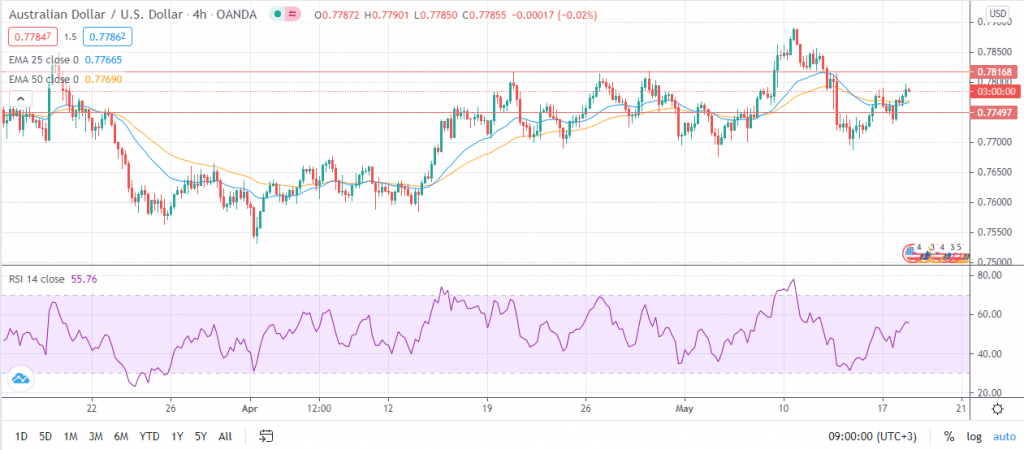Chinese data
AUD/USD price movement on Monday was a sign of the interconnectivity of economies. Despite the geopolitical tensions between Australia and China, yesterday’s reaction signaled that countries’ reliance on each other surpasses the ongoing trade war.
China is Australia’s largest two-way trade partner. The Middle Kingdom represents 29% of Australia’s international trade. In particular, 60% of the iron ore used in China’s steelmaking factories comes from Australia. It is also the leading source of coal consumed in China, with the latter country being the largest consumer of the commodity worldwide. As such, lower-than-expected Chinese retail and industrial data pushed the currency pair lower.
According to the country’s National Bureau of Statistics, China’s industrial production rose by 9.8% in April on a year-on-year basis. While the number matched analysts’ estimates, it was lower than March’s 14.1%. Similarly, the country’s retail sales rose by 17.7% YoY compared to the expected 24.9% and prior month’s 34.2%.
RBA meeting minutes
In Tuesday’s session, AUD/USD is reacting to the Reserve Bank of Australia (RBA) meeting minutes. In the meeting held on 4th May, the central bank left interest rates unchanged at a record low 0.1%. Besides, it extended its yield curve control (YCC) and quantitative easing (QE) programs. As part of its QE program, the central bank is currently in its second phase of the $78 billion asset-buying scheme.
In Tuesday’s minutes, the focus was on RBA’s commitment to maintaining an accommodative policy until inflation reaches its target of between 2-3%. The central bank has stated that it will monitor the economic data and factors at play in the financial markets ahead of its meeting on 6th July. The move is crucial in deciding if it will extend its $80 billion (A$ 100 billion) QE program after its expiry in September.
Investors will also be watching if the bank will extend the 3-year yield target from the current April 2024 bond to November 2024. The decision will offer cues on when RBA will begin hiking interest rates.
According to the bank, wage growth and unemployment change are key drivers of the desired rise in inflation. On Thursday, the Australian Bureau of Statistics is scheduled to release job numbers. The unemployment rate is expected to remain unchanged at 5.6%. However, economists expect 15,000 more people to have been employed in April compared to the prior 70,700.
RBA is striving to push the unemployment rate lower to 4%, and wage growth steadily above 3%.
Currently, Australia’s inflation rate is 1.1%. In Q1’21, it rose by 0.6% compared to the forecasted 1.4%. RBA predicts a short-lived rise in inflation in the current quarter. However, it is not likely to hit the target level prior to mid-2023. As such, some economists expect interest rates to remain low until late 2023.
FOMC meeting minutes
This week will also have AUD/USD reacting to the release of FOMC meeting minutes on Wednesday. Similar to RBA, the Federal Reserve has maintained a dovish tone despite the notable economic recovery. The Fed Chair Jerome Powell, as well as officials such as Vice Chair Richard Clarida and Governor Christopher Waller, have held that the expected inflation is transitory.
Notably, the remarks by the Fed officials have helped calm the inflation fears that rocked the market in the previous week. However, some investors are still concerned about the likelihood of the US economy overheating. The recent US inflation data, the CPI numbers, in particular, had market participants pondering on whether inflation is a larger problem than Fed is willing to admit.
AUD/USD Technical Outlook
At the time of writing, AUD/USD was up by 0.24% at 0.7785. On a 4-hour chart, it is trading above the 25 and 50-day exponential moving averages.

At the current RSI of 55, it is likely to rise to 0.7816 as more buyers enter the market. On the flip side, the currency pair may drop to find support at 0.7750.



